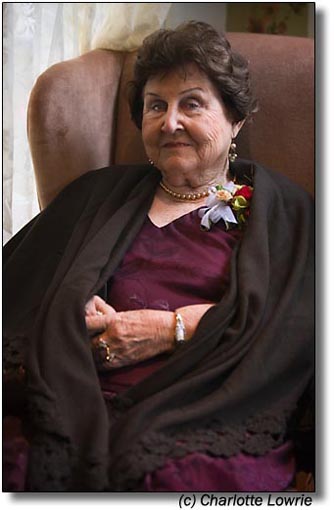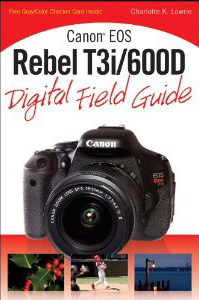By Charlotte Lowrie
 Whether it is the holiday season or a family reunion in the heat of summer, a few tips can help you turn snapshots of family and friends into portraits with a professional touch. Whether it is the holiday season or a family reunion in the heat of summer, a few tips can help you turn snapshots of family and friends into portraits with a professional touch.
- Be prepared. Storyboard the event in advance so that you have a cohesive story, and so that you know the portraits that you want to make, and how you want them to look.
- Be sure your gear is ready. Charge batteries. Clean the lenses. Put fresh batteries in the Speedlite. Have spare memory cards. Pack one or two small reflectors. Invest in a good flash modifier such as a softbox or diffuser.
- Direct the subjects. Few people feel comfortable in front of a camera. They need and want your direction to not only put them at ease, but also to tell them how to stand or sit. Watch the smiles, and be sure that the subject’s eyes are smiling as well. Do all you can to help the subject relax and enjoy the process of making the portraits. And be sure they connect with you because this will be one quality that is first noticed in the portrait.
- Use the right lens. For portraits of a single person or a couple, the lens of choice is a short telephoto such as a 85mm, 100mm, or 105mm lens. Keep the aperture wide, such as f/5.6 or wider, to create a shallow depth of field. And to blur the background even more, move the subject far from the background. For groups, a 24-70mm lens gives you a wider angle of view to include a larger group of people.
- Focus on the eyes. Always, always focus on the subject’s eye that is closest to the camera. If the eyes are equidistant, then choose one or the other eye to focus on. I strongly recommend manually selecting a single AF point—the AF point that is on top of the subject’s eye. If there are multiple people in the image, arrange them so that one person is the center of attention, and focus on that person’s eye. Then set a narrow aperture to create an extensive depth of field that will help keep good detail in the faces of the group. For example, for a group of four or five people, start with f/8 or f/11, and move the people close together. The idea is to get the faces on or as close as possible to the plane of sharp focus. And with a narrow aperture, be sure to move the subjects away from the background to keep it from becoming distracting. For more on focus, see my Focus on Sharp Focus article.
-
 No trees, please. If you’re making outdoor portraits, many new photographers put the subject against or near a tree. The tree really isn’t necessary, and it is a dated technique. Instead, move the subject to an area with open shade and keep the background clean and free of distractions. No trees, please. If you’re making outdoor portraits, many new photographers put the subject against or near a tree. The tree really isn’t necessary, and it is a dated technique. Instead, move the subject to an area with open shade and keep the background clean and free of distractions.
- Get the exposure right. To get the exposure right, be sure to check the histogram after shooting to see if there are blown highlights or blocked shadows. Sometimes, bright background objects may blow out, but there should be no blown highlights on the subjects’ faces or skin. For more on exposures, see my article, Ensuring Good Exposures.
- Using a flash. If you’re using a flash indoors, turn on all the available lights in the room to increase the chance of using the flash as fill light rather than having it become the primary light. For more on flash photography, see my Basic Flash Shooting Tips article.
- Use window light. Window light is one of the most beautiful light sources you can get for portraits. Begin shooting early enough to make use of any available window light. The portrait of the grandmother showin in this article was made using window light.
-
 Know when to stop. Don’t wear out your family and friends by doing many shots. Know when you have the coverage you need, and then move on. Know when to stop. Don’t wear out your family and friends by doing many shots. Know when you have the coverage you need, and then move on.
- Enjoy the process. If you’re having fun, you’ll communicate your joy and enthusiasm to the people you are photographing.
Also be sure to check out my book, the
Canon EOS T3i/600D Digital Field Guide.
|

